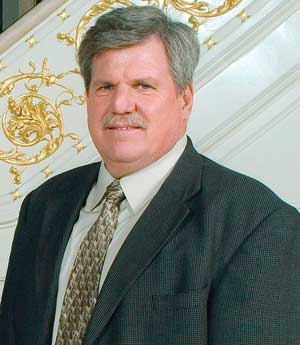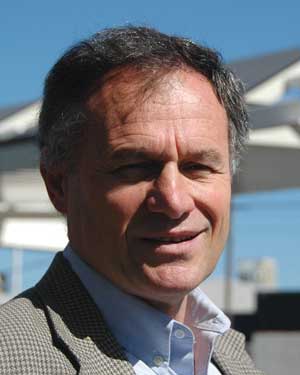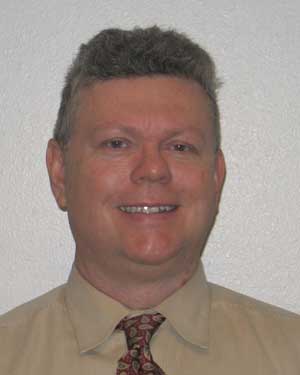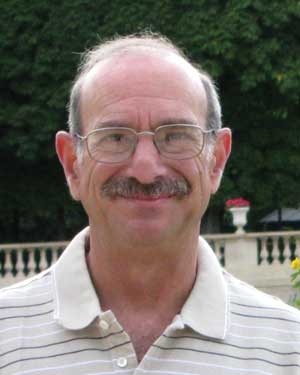Securing biomass's position and meeting RPS goals













January 1, 1970
BY Lisa Gibson
Biomass is the No. 1 renewable energy resource for the Sacramento Municipal Utility District, holding a steady 41 percent of energy from renewables, according to Michael DeAngelis, manager of SMUD's Advanced, Renewable & Distributed Generation Technologies Program.
DeAngelis was the first speaker in the panel titled Securing the Position of Biomass in California's Energy Portfolio at the Pacific West Biomass Conference & Expo in Sacramento. "It's clear that renewable energy and biomass are here to stay," DeAngelis told attendees. "Biomass has become a very significant portion of our energy supply in the Sacramento region. We expect it to remain a major portion of our supply." That biomass energy supply consists primarily of wood waste cogeneration, with five landfill and wastewater gas projects, along with the use of biomethane in the pipeline, which he said is the fastest-growing of all SMUD's renewable energy options.
The publicly owned utility has the most aggressive energy efficiency goals-15 percent in 10 years-of any large utility in the state of California, DeAngelis said. In addition, the company expects to be the only large utility to meet California's renewable portfolio standard (RPS) of 20 percent by 2010.
Overall, the state is not on track to achieve that goal, according to Michael Leaon, supervisor of the Integrated Energy & Climate Change Unit of the California Energy Commission. Additionally, the Governor's Executive Order establishes a 33 percent RPS by 2020, with 20 percent from biopower, Leaon said. Statewide, 20 percent of renewable energy in 2008 came from biomass, 70 percent of that from plants that came on line by 2000, he added.
Financial support has the potential to spur biomass development and help reach RPS goals, Leaon told attendees. The state offers the Existing Renewable Facilities Program, which provides incentive payments for energy generated from solid biomass. "This has been an important program for supporting solid biomass facilities," he said.
Gregg Morris, director of the Green Power Institute, agreed that California's RPS is too lofty a goal and current progress has not kept up. "There's not a chance that we will achieve that 20 percent target by 2010," he said. "We want our renewable production overall in California to approximately triple compared with where it was in 2002."
The RPS requires utilities to increase renewable energy sources by 1 percent annually, but they have instead declined since the RPS was established in 2002, he said. "They've actually fallen behind every single year since it went into effect."
Biomass made up 22 percent of total renewable energy in California in 2003, decreasing to 20 percent in 2008. In that time, the mandate required 43 percent renewable energy generation, but only 3.4 percent was achieved. The reason: Biomass is expensive, Morris said. "But the fact is, it's also expensive not to do it," he said, adding that landfill burial and burning of waste are more costly alternatives. Since 1980, 60 biomass plants have been built in California, only half of which are still operational. The next steps to increasing biomass use are continued support for existing facilities, bioenergy banding within the RPS, targeted credits for specific biomass facilities and generating credits for bioenergy, Morris said.
David Bischel, president and CEO of the California Forestry Association talked about the untapped potential for woody biomass in California's forestlands. One-third of California's 100 million acres is forestland. The state has more than twice as much wood standing dead in forests as there is wood being harvested, he said. More than 10 million acres are at high or very high risk of catastrophic fire, driven by accumulated fuel loads. Climate change could make that fire threat worse, Bischel said. "The opportunities for sustainable biomass utilization are immense in dealing with this issue," he said. Reducing that fuel load also protects water quality and lowers the cost of cleaning it for consumption.
There are 14 million bone-dry tons of potential woody biomass that needs to be removed from forests, Bischel said, with the potential to produce 1,750 megawatts of electricity and 17,000 new jobs. Challenges include the cost, definition of biomass and regulations. "I couldn't agree more that California is really in a state of regulatory gridlock," he said. But the will, motivation and resources on the part of landowners are what will determine how far woody biomass can go, he added.
-Lisa Gibson
DeAngelis was the first speaker in the panel titled Securing the Position of Biomass in California's Energy Portfolio at the Pacific West Biomass Conference & Expo in Sacramento. "It's clear that renewable energy and biomass are here to stay," DeAngelis told attendees. "Biomass has become a very significant portion of our energy supply in the Sacramento region. We expect it to remain a major portion of our supply." That biomass energy supply consists primarily of wood waste cogeneration, with five landfill and wastewater gas projects, along with the use of biomethane in the pipeline, which he said is the fastest-growing of all SMUD's renewable energy options.
The publicly owned utility has the most aggressive energy efficiency goals-15 percent in 10 years-of any large utility in the state of California, DeAngelis said. In addition, the company expects to be the only large utility to meet California's renewable portfolio standard (RPS) of 20 percent by 2010.
Overall, the state is not on track to achieve that goal, according to Michael Leaon, supervisor of the Integrated Energy & Climate Change Unit of the California Energy Commission. Additionally, the Governor's Executive Order establishes a 33 percent RPS by 2020, with 20 percent from biopower, Leaon said. Statewide, 20 percent of renewable energy in 2008 came from biomass, 70 percent of that from plants that came on line by 2000, he added.
Financial support has the potential to spur biomass development and help reach RPS goals, Leaon told attendees. The state offers the Existing Renewable Facilities Program, which provides incentive payments for energy generated from solid biomass. "This has been an important program for supporting solid biomass facilities," he said.
Gregg Morris, director of the Green Power Institute, agreed that California's RPS is too lofty a goal and current progress has not kept up. "There's not a chance that we will achieve that 20 percent target by 2010," he said. "We want our renewable production overall in California to approximately triple compared with where it was in 2002."
The RPS requires utilities to increase renewable energy sources by 1 percent annually, but they have instead declined since the RPS was established in 2002, he said. "They've actually fallen behind every single year since it went into effect."
Biomass made up 22 percent of total renewable energy in California in 2003, decreasing to 20 percent in 2008. In that time, the mandate required 43 percent renewable energy generation, but only 3.4 percent was achieved. The reason: Biomass is expensive, Morris said. "But the fact is, it's also expensive not to do it," he said, adding that landfill burial and burning of waste are more costly alternatives. Since 1980, 60 biomass plants have been built in California, only half of which are still operational. The next steps to increasing biomass use are continued support for existing facilities, bioenergy banding within the RPS, targeted credits for specific biomass facilities and generating credits for bioenergy, Morris said.
David Bischel, president and CEO of the California Forestry Association talked about the untapped potential for woody biomass in California's forestlands. One-third of California's 100 million acres is forestland. The state has more than twice as much wood standing dead in forests as there is wood being harvested, he said. More than 10 million acres are at high or very high risk of catastrophic fire, driven by accumulated fuel loads. Climate change could make that fire threat worse, Bischel said. "The opportunities for sustainable biomass utilization are immense in dealing with this issue," he said. Reducing that fuel load also protects water quality and lowers the cost of cleaning it for consumption.
There are 14 million bone-dry tons of potential woody biomass that needs to be removed from forests, Bischel said, with the potential to produce 1,750 megawatts of electricity and 17,000 new jobs. Challenges include the cost, definition of biomass and regulations. "I couldn't agree more that California is really in a state of regulatory gridlock," he said. But the will, motivation and resources on the part of landowners are what will determine how far woody biomass can go, he added.
-Lisa Gibson
Advertisement
Advertisement
Upcoming Events





